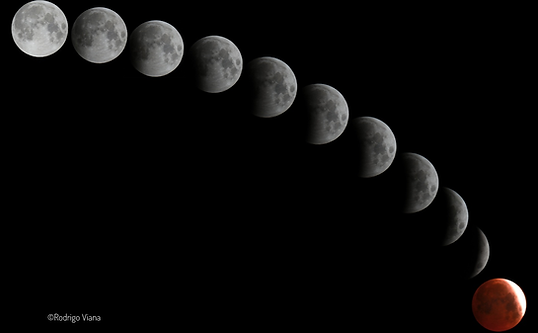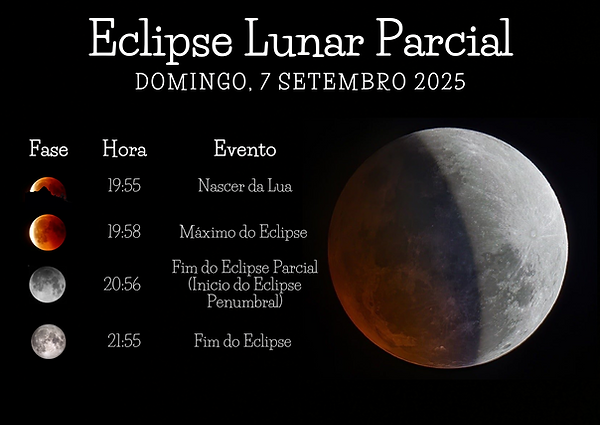Rodrigo Astrophoto

Eclipses 2025 - Portugal

Best Observation Location (Total Eclipse): Regions of the Americas (continent)
Best Observation Location in Portugal (Total Eclipse): Azores Archipelago
Note:
- The penumbral phase is not visible to the naked eye! Only telescopes, binoculars, or equipment capable of magnifying the image can see/capture this phase. During this moment, the Moon loses about 10% of its brightness, a change imperceptible to the human eye.
- The total eclipse will occur during morning twilight. At this time the sky will be quite bright, which may make it difficult to view the eclipse.
- At the maximum visible moment of the eclipse, the Sun will already have risen and the Moon will be almost setting, increasing atmospheric and sunlight interferences that may hinder or even prevent observation of the eclipse.
- To minimize interferences with obstacles in the field of view, look for a location without obstructions and with a clear western horizon.
Note: All these times were calculated for the districts of Viana do Castelo, Braga, and Porto. In other regions, some phases may occur a little earlier or later, but the difference will be minimal (only a few minutes).

Best Observation Location (Partial Eclipse – Sun 91% covered): Regions in Northern Canada (Newfoundland and Labrador, Quebec, and Northern Region of Nunavut)
Best Observation Location in Portugal (Partial Eclipse – Sun 30% covered): District of Viana do Castelo, Braga, and Porto
Nota:
- Never look directly at the Sun without proper protection. Direct exposure can cause permanent vision damage such as blindness. To observe the event safely, use: certified eclipse glasses (with filters that block harmful solar radiation), solar filters for telescopes and binoculars, a welding mask with a Grade 14 filter or higher (ANSI Z87.1), or indirect projection methods.

Best Observation Location (Total Eclipse): regions of Eastern Africa, Asia, and Australia.
Best Observation Location in Portugal (Total Eclipse): Districts of Faro, Beja, Évora, Portalegre, Castelo Branco, Guarda, Viseu, Vila Real, Bragança
Nota:
- The penumbral phase is not visible to the naked eye! Only telescopes, binoculars, or equipment capable of magnifying the image can see/capture this phase. During this moment, the Moon loses about 10% of its brightness, a change imperceptible to the human eye.
- To minimize interferences with obstacles in the field of view, look for a location without obstructions and with a clear eastern horizon.
- When the Moon rises, it will already be eclipsed and will begin to leave the umbra (the darkest shadow of the Earth). At that moment, the Sun will just have set, and the Moon will appear on the horizon during civil twilight, a period when sunlight will hinder the observation of the phenomenon. Only from 20:23 onwards, with the beginning of nautical twilight, will the sky be darker, providing better conditions to follow the eclipse.